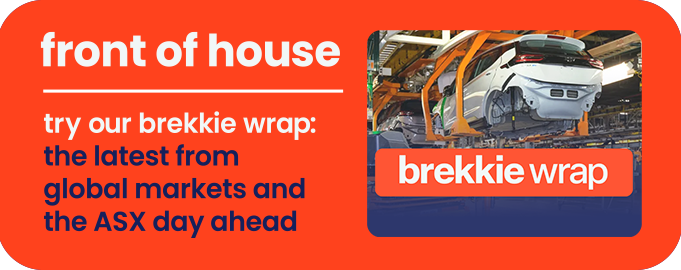“We may find ourselves in the challenging scenario in which our dual-mandate goals are in tension.”
Federal Reserve Chair Jerome Powell has warned that President Donald Trump’s sweeping new tariffs are likely to produce both higher inflation and slower economic growth—placing the central bank in a precarious position as it tries to balance its dual mandate.
Speaking at the Economic Club of Chicago on Wednesday, Powell said that if inflation accelerates while the economy stagnates, the Fed could face “a very difficult judgment” about whether to prioritise price stability or support employment.
“Tariffs are highly likely to generate at least a temporary rise in inflation,” Powell said, adding, “The inflationary effects could also be more persistent.”
An unusual policy bind
The Fed is tasked with two primary goals: keeping prices stable and maximising employment. But Trump’s escalating tariff regime—described by Powell as “significantly larger than anticipated”—could set those objectives at odds.
“We may find ourselves in the challenging scenario in which our dual-mandate goals are in tension,” Powell said. “If that were to occur, we would consider how far the economy is from each goal, and the potentially different time horizons over which those respective gaps would be anticipated to close.”
Tariffs, which function effectively as import taxes, typically raise consumer prices, especially if businesses pass on those costs. At the same time, Powell noted that uncertainty caused by rapid and sweeping policy shifts—such as Trump’s on-again, off-again tariffs—can chill business investment and hiring, thereby weakening economic growth.
“Unemployment is likely to go up as the economy slows… and inflation is likely to go up as tariffs find their way and some part of those tariffs come to be paid by the public,” Powell told the audience in a post-speech Q&A. “So that’s the strong likelihood.”
Inflation expectations rising
Powell noted that short-term market and survey-based inflation expectations are now climbing, while the Fed’s preferred inflation metric is projected to hit 2.6% in March. Some economists expect inflation could rise to 4% or higher later this year if tariffs remain in place.
“Avoiding [persistent inflation] will depend on the size of the effects, on how long it takes for them to pass through fully to prices, and, ultimately, on keeping longer-term inflation expectations well anchored,” Powell said.
He warned that while the Fed has traditionally treated tariffs as a one-off shock, the scale and scope of Trump’s current policy push may defy that precedent.
Powell’s comments come as the average U.S. tariff rate is believed to have climbed from around 3% early this year to about 25%, with particularly steep increases targeting China and automotive imports. A 90-day pause has been announced for some tariffs, but exemptions are limited.
Fed adopts wait-and-see stance
Despite growing concerns, Powell said the central bank would remain cautious, avoiding any immediate policy changes.
“For the time being, we are well positioned to wait for greater clarity before considering any adjustments to our policy stance.”
Markets are currently pricing in three rate cuts by the end of 2025, according to the CME FedWatch tool, but Powell gave no signal as to whether those expectations align with the Fed’s internal thinking.
Other Fed officials are similarly divided. Governor Christopher Waller this week said he believes the inflation spike from tariffs will be temporary and could warrant rate cuts if growth weakens. But Minneapolis Fed President Neel Kashkari and others have emphasised the risk of entrenched inflation, urging restraint.
Signs of slowdown already emerging
Powell said first-quarter GDP data, due later this month, is likely to show a sharp deceleration in growth. The Atlanta Fed currently estimates GDP growth at -0.1% for the quarter, dragged down in part by an unusual spike in gold imports and a surge in consumer spending ahead of tariff deadlines.
“Despite strong motor vehicle sales, overall consumer spending appears to have grown modestly,” Powell said. “Strong imports during the first quarter, reflecting attempts by businesses to get ahead of potential tariffs, are expected to weigh on GDP growth.”
Retail sales rose 1.4% in March, well above expectations, but analysts say the timing of purchases suggests consumers may have been trying to lock in prices before tariffs take full effect.
Independence under pressure
Powell also addressed concerns about the Fed’s independence amid rising political pressure and legal challenges to the autonomy of other U.S. regulatory bodies.
“The Fed’s independence is a matter of law,” Powell said, distancing the central bank from speculation that it could face dismissal or political interference. He acknowledged a Supreme Court case on presidential authority over independent agencies, but said it was unlikely to apply to the Fed.
As markets continue to react to tariff uncertainty—highlighted by bond market swings and tech sector sell-offs—Powell said current market behaviour remained orderly, albeit volatile.
“Markets are functioning kind of as you would expect them to in a period of high uncertainty,” he said.
In closing, Powell underscored that the central bank would remain data-driven but vigilant.
“Our role is to make sure that this is a one-time increase in prices and not something that turns into an ongoing inflation process.”





